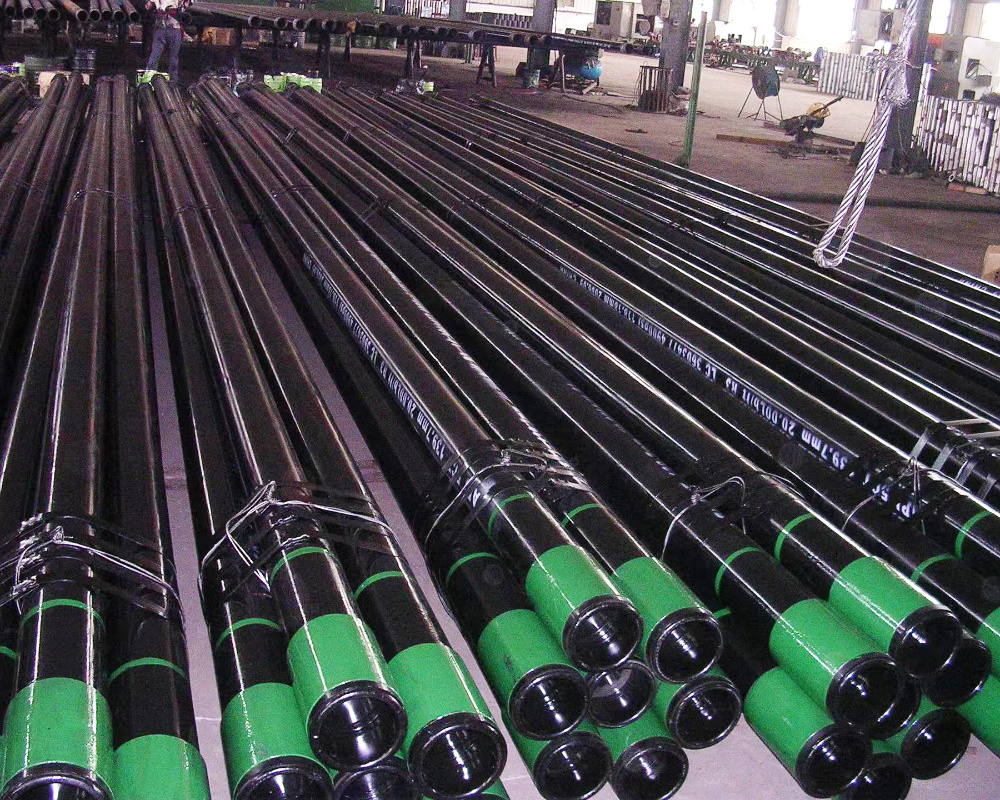Understanding ASTM A106 Seamless Pipe: Key Insights for Professionals
ASTM A106 seamless pipes are widely used in the construction and decoration industry, especially for applications requiring high-temperature and high-pressure conditions. These pipes are primarily made from carbon steel and are characterized by their ability to withstand significant stress without the risk of rupture or failure. This makes them ideal for transporting fluids, gases, and other mater
ASTM A106 seamless pipes are widely used in the construction and decoration industry, especially for applications requiring high-temperature and high-pressure conditions. These pipes are primarily made from carbon steel and are characterized by their ability to withstand significant stress without the risk of rupture or failure. This makes them ideal for transporting fluids, gases, and other materials in demanding environments.
One of the standout features of ASTM A106 seamless pipes is their manufacturing process. Unlike welded pipes, seamless pipes are produced from a single piece of steel, eliminating the potential weak points created by welds. This results in a pipe that offers superior mechanical properties, including enhanced strength and durability. As a result, ASTM A106 pipes are often preferred for critical applications in power plants, oil refineries, and chemical processing facilities.
When it comes to specifications, ASTM A106 pipes are categorized into three grades: A, B, and C. Each grade is designed to meet specific requirements, with Grade B being the most commonly used due to its balanced strength and flexibility. Professionals in the construction field should be well-versed in these grades to ensure they select the appropriate type for their projects.
In terms of dimensions, ASTM A106 seamless pipes are available in a variety of diameters and wall thicknesses, allowing for flexibility in design and application. The standard allows for sizes ranging from 1/8 inch to 30 inches in nominal diameter, making it suitable for both small and large-scale projects. The wall thickness can also vary, catering to different pressure requirements.
Additionally, when considering ASTM A106 seamless pipes, it is crucial to be aware of their corrosion resistance. While carbon steel pipes are generally susceptible to corrosion, various coatings and treatments can be applied to enhance their longevity and performance in corrosive environments. This is an important consideration for professionals working in industries where exposure to harsh conditions is a factor.
In conclusion, understanding the properties and applications of ASTM A106 seamless pipes is essential for professionals in the construction and decoration materials industry. Their superior mechanical strength, absence of welds, and versatility in size make them a reliable choice for a wide range of applications. By familiarizing yourself with these factors, you can better navigate the complexities of selecting the right materials for your projects, ensuring safety and efficiency in your operations.
One of the standout features of ASTM A106 seamless pipes is their manufacturing process. Unlike welded pipes, seamless pipes are produced from a single piece of steel, eliminating the potential weak points created by welds. This results in a pipe that offers superior mechanical properties, including enhanced strength and durability. As a result, ASTM A106 pipes are often preferred for critical applications in power plants, oil refineries, and chemical processing facilities.
When it comes to specifications, ASTM A106 pipes are categorized into three grades: A, B, and C. Each grade is designed to meet specific requirements, with Grade B being the most commonly used due to its balanced strength and flexibility. Professionals in the construction field should be well-versed in these grades to ensure they select the appropriate type for their projects.
In terms of dimensions, ASTM A106 seamless pipes are available in a variety of diameters and wall thicknesses, allowing for flexibility in design and application. The standard allows for sizes ranging from 1/8 inch to 30 inches in nominal diameter, making it suitable for both small and large-scale projects. The wall thickness can also vary, catering to different pressure requirements.
Additionally, when considering ASTM A106 seamless pipes, it is crucial to be aware of their corrosion resistance. While carbon steel pipes are generally susceptible to corrosion, various coatings and treatments can be applied to enhance their longevity and performance in corrosive environments. This is an important consideration for professionals working in industries where exposure to harsh conditions is a factor.
In conclusion, understanding the properties and applications of ASTM A106 seamless pipes is essential for professionals in the construction and decoration materials industry. Their superior mechanical strength, absence of welds, and versatility in size make them a reliable choice for a wide range of applications. By familiarizing yourself with these factors, you can better navigate the complexities of selecting the right materials for your projects, ensuring safety and efficiency in your operations.
TAG:
Related Posts
Exploring the Applications of Seamless Black Steel Pipe in Architecture: A Comprehensive Guide
Exploring the Applications of Seamless Black Steel Pipe in Architecture
Table of Contents
Introduction to Seamless Black Steel Pipe
Properties and Characteristics of Seamless Black Steel Pipe
Advantages of Using Seamless Black Steel Pipe in Construction
Diverse Applications of Seamless Black Steel Pipe
Structural Applications
Mechanical Application










